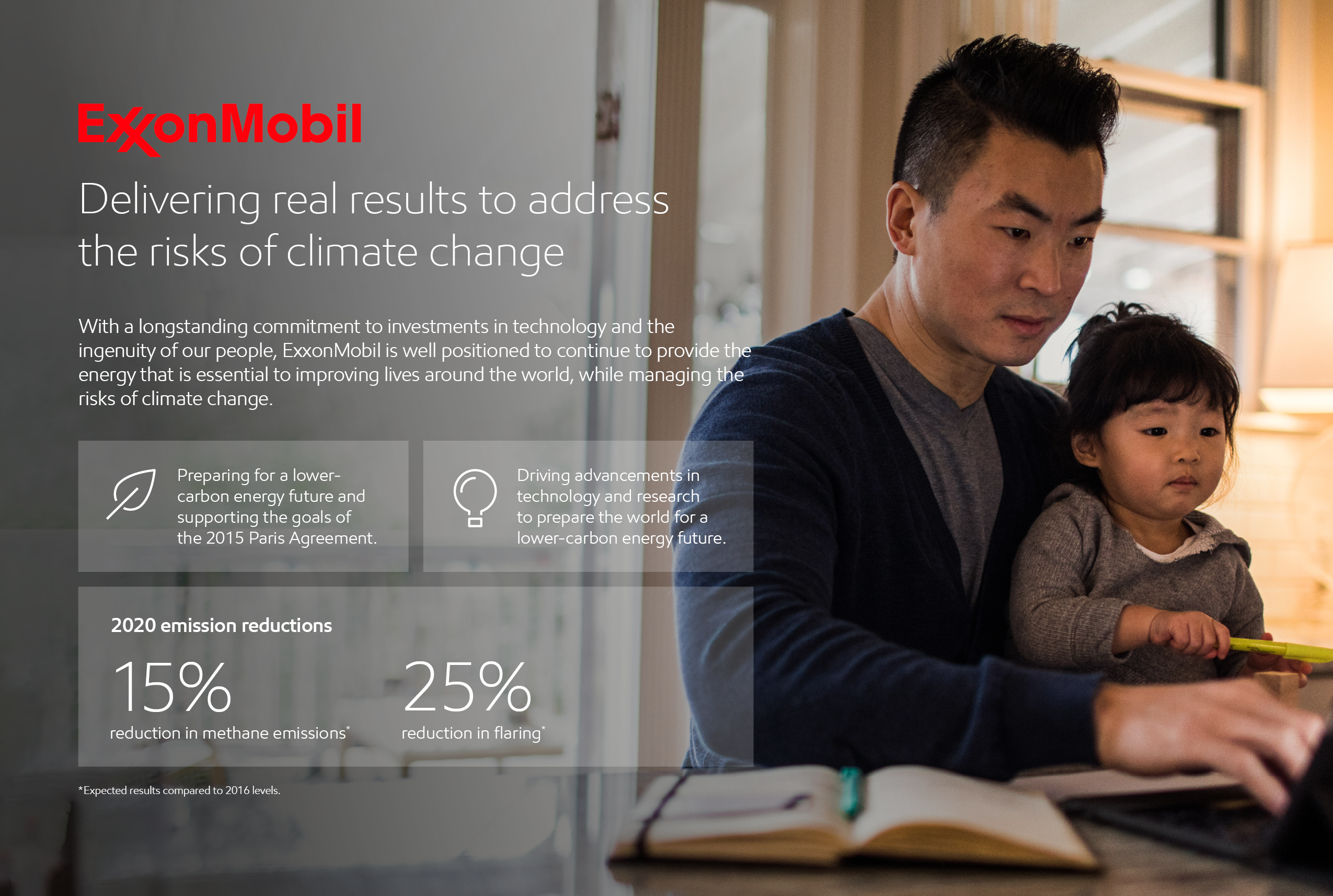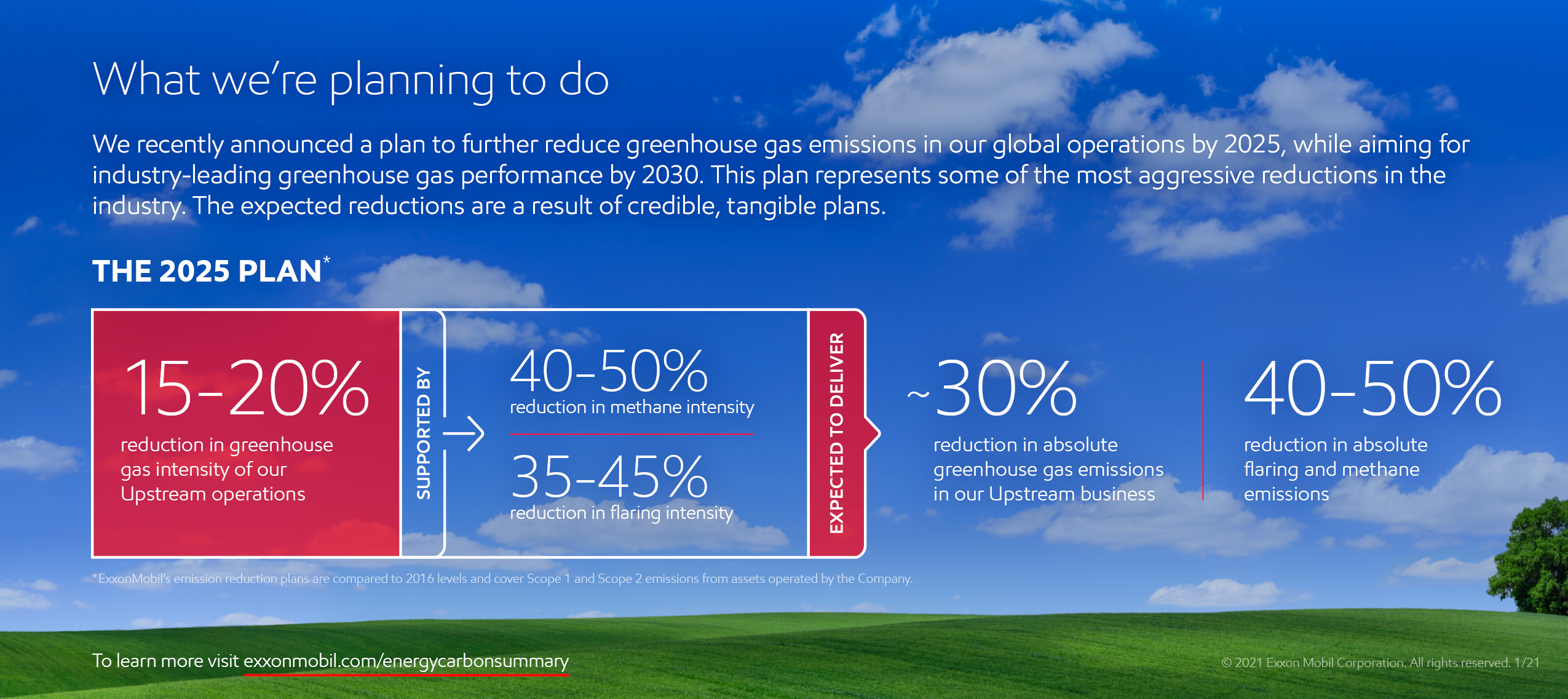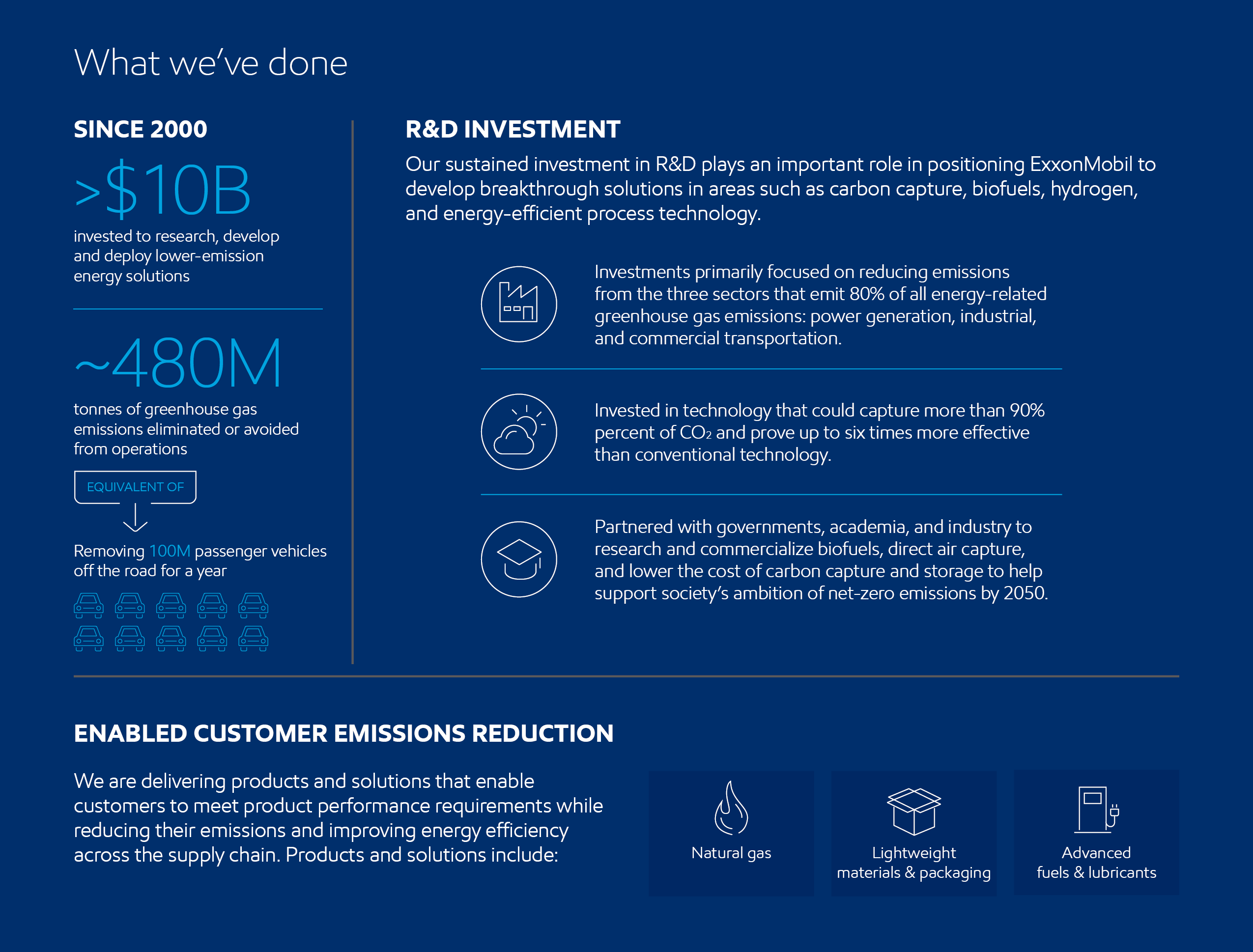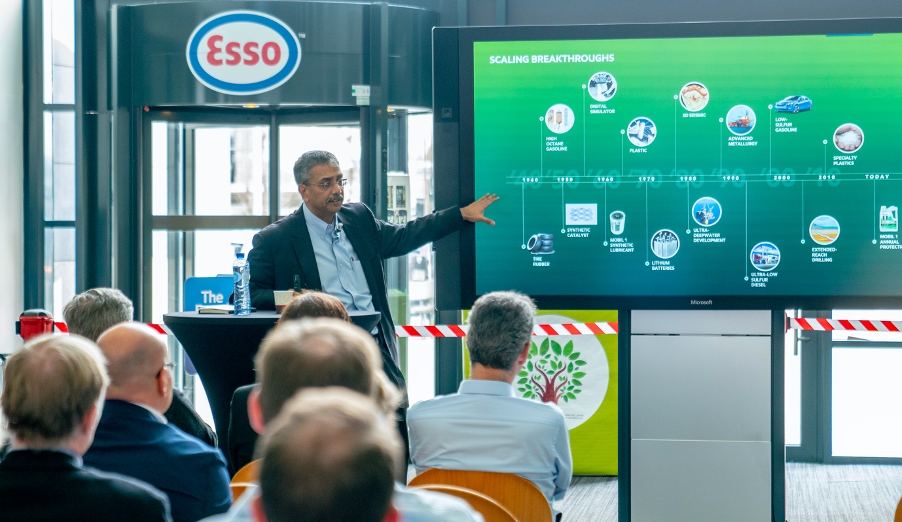Earlier this month, ExxonMobil released its annual Energy & Carbon Summary, a comprehensive look at the work the company has done to manage the risks of climate change, including actions to reduce greenhouse gas emissions.
The publication articulates ExxonMobil’s climate strategy centered around four areas: reducing emissions from its operations, developing and deploying scalable technology solutions, providing consumers with products that help them reduce their emissions, and proactively engaging on climate-related policy.
Here is an overview:
A look back: The company reported in 2019 its lowest levels of greenhouse gas emissions since 2010. Much of that is thanks in part to a commitment to reducing methane emissions from its upstream operations. By year-end 2020, ExxonMobil was on track to meet announced commitments of a 15 percent reduction in methane emissions and a 25 percent drop in flaring compared to 2016 levels.
Looking ahead: The company’s 2025 emission reduction plans are expected to cut greenhouse gas emissions from its oil and gas production business by approximately 30 percent and flaring and methane emissions by 40 to 50 percent, compared to 2016 levels. The 2025 plans, which cover direct (Scope 1) and indirect (Scope 2) emissions from the company’s operated assets, represent some of the most aggressive reductions in the industry. The company also aims to eliminate routine flaring from its upstream operations, over the next decade, in line with the World Bank’s initiative. These plans help position ExxonMobil to become an industry leader in greenhouse gas performance by 2030 and support the goals of the Paris Agreement.
The commitment: ExxonMobil is dedicated to providing reliable, affordable energy to help support human progress while advancing solutions to mitigate the risks of climate change. As the world shifts to new energy sources, even 2-degree climate scenarios developed by the Intergovernmental Panel on Climate Change (IPCC) and the International Energy Agency (IEA) recognize the role that oil and gas will continue to play for decades.
Today, company employees’ deep understanding of the global energy system helps advance operational efficiencies and develop and deploy lower-emission technologies to help address climate change risks.
The approach: Developing novel and scalable technologies is critical to achieving the goals of the Paris Agreement. To that end, ExxonMobil is working to develop breakthrough solutions in emission reductions for society’s highest-emitting industries, including manufacturing, power generation and commercial transportation, which account for 80 percent of global CO2 emissions. From carbon capture and storage and advanced fuels to hydrogen and energy-efficient technologies, these solutions will help cut emissions and create a step-change in how the world pursues a 2-degree pathway.
An exchange of ideas and expertise: A variety of disciplines in science and engineering are needed to provide affordable and scalable energy. No single organization has all the answers, and recognizing that is key to unlocking new, viable technologies. That’s why ExxonMobil teams up with external trailblazers, private and public entities – the US National Renewable Energy Laboratory, the US National Energy Technology Laboratory, more than 80 universities, and startups on the front lines of alternative energy solutions. All working together in search of those answers and new energy innovation.
In the quest to transition ideas and innovations from the lab to the market, the company brings to the table its unique strengths in science, engineering and a global market position.
A collective approach: Beyond the laboratory, field tests and computing prowess, ExxonMobil also works with stakeholders to advocate for sound policy solutions that can reduce climate-related risks while also facilitating access to affordable and reliable energy for society. That work calls for collective and collaborative efforts beyond top-down regulations. Our voluntary efforts to reduce methane emissions, for example, provides a framework for effective regulations for the entire industry.
Why this matters: “Few would disagree that one of the most urgent societal challenges we face today is addressing the risks of climate change. How we meet the world’s demand for the energy necessary for economic growth while mitigating the long-term impact on our environment is key to our sustainable future. “– Darren W. Woods, Chairman.






